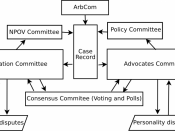In law, access to justice with respect to dispute resolution is a central issue. How people make use of services available to make decisions and resolve issues between them and the factors which impede or facilitate access, are all matters of concern.
In dispute resolution there are various options which an individual may use in order to settle a dispute. They are as follows:
1. çÂÂçÂÂçÂÂçÂÂCourts (Civil & Criminal)
2. çÂÂçÂÂçÂÂçÂÂAlternative Dispute Resolution
3. çÂÂçÂÂçÂÂçÂÂTribunals
Courts
The Court follows a particular structure, which can be complex. But basically the courts are made up of, the House of Lords which is the highest appellate court for appeals on important points of law, the Court of Appeal which has separate criminal and civil divisions, the High Court the highest first instance Civil Court, and also an appellate court, the Crown Court which deals with criminal jury trials and appeals from Magistrates Court, the County Court which is usually a first instance Court for civil cases and finally the Magistrates Court which deals with predominantly criminal but also some civil jurisdiction.
In his report on access to justice, Lord Woolf identified a range of problems with the civil justice system.
1. çÂÂçÂÂçÂÂçÂÂCases were turning out to be too expensive. In many cases the cost involved exceeded the actual amount claimed.
2. çÂÂçÂÂçÂÂçÂÂThere were long delays. Cases were taking years to go to court. This placed financial and psychological burden on claimants.
3. çÂÂçÂÂçÂÂçÂÂDelays were caused by the adversarial process, which saw some parties causing problems, by being uncooperative through tactical manoeuvring.
4. çÂÂçÂÂçÂÂçÂÂThe system was fragmented with no one body having overall control of the administration of justice.
Recommendations that were made by Lord Woolf were then implemented by the Civil Procedure Act 1997 and New Civil Procedure Rules which came into...


